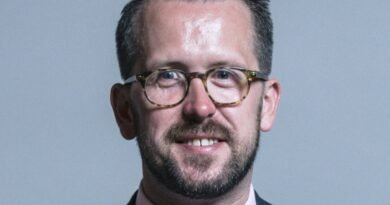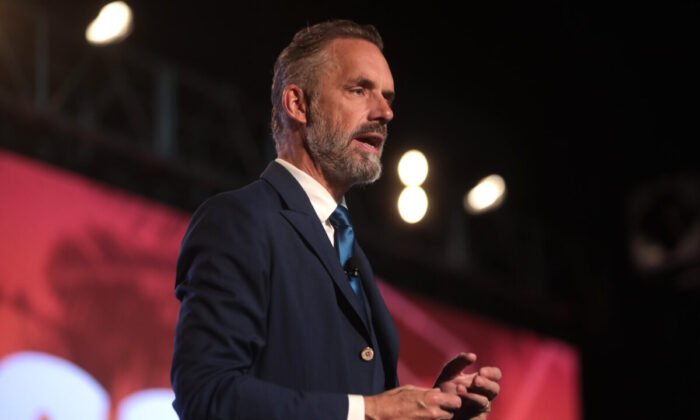Health Care Wait Times Increasing for Canadians, According to Data
The number of Canadians waiting for health care, including surgeries, to see specialists, or to receive diagnostic scans, has risen to over 3.1 million in the past year.
Data from SecondStreet.org, a think tank that focuses on the impact of government decisions on Canadians, tracks how many patients are waiting for health care, and as of Dec. 26, the number was 3,134,853. That is an increase of about 140,000 since 2022, the organization said.
It said the number could be as high as 5.1 million patients or one in eight Canadians.
“Overall, we’ve seen a rise in patients waiting. This is not good news,” SecondStreet.org Communications Director Dom Lucyk said in the release.
“We’ve seen positive movement in some parts of the country, but overall, we’re going in the wrong direction.”
According to the statistics, the wait time for surgery is over 27 weeks in 2023, up from nine weeks in 2000. SecondStreet found that 58,652 people have died while on a waitlist for care.
That statistic “include[s] cases where patients died while waiting for surgeries which could have potentially saved their lives,” SecondStreet said.
Surgical Waitlist Results
Of all the provinces, Saskatchewan, Quebec, and Manitoba were able to reduce the number of people on surgical and diagnostic waitlists, SecondStreet said. However, data from Manitoba is not comprehensive as it only covers four types of surgeries and five types of diagnostic testing.
The statistics also showed that Ontario was able to reduce the number of those on a surgical waitlist by 6.2 percent, but those waiting for diagnostic scans rose nearly 44 percent.
Over the past year, the number of people on a surgical waitlist in B.C. has gone up by 3.4 percent. In Alberta, that number is 1.6 percent higher than in 2022.
Saskatchewan saw a 17.4 percent decrease in those on a surgical waitlist, and Manitoba’s number dropped by 20.9 percent. Ontario saw a 6.2 percent drop, Quebec’s surgical waitlist declined by 2.1 percent, and New Brunswick’s numbers dropped by 7 percent. Newfoundland saw a 62.9 percent drop on its surgical wait list and the number of those waiting for surgery in Nova Scotia fell by 23.4 percent.
In the Northwest Territories, there was a 32.9 percent increase in those waiting for surgery, and Nunavut’s surgical waitlist rose by 13.4 percent.
PEI and the Yukon did not have statistics to report.
Diagnostic Scan Waitlist Balloons
Saskatchewan, Manitoba, and Quebec were the only provinces where the number of those on a diagnostic list decreased. Most other provinces saw double-digit percent increases in those waiting for testing to diagnose their health challenges.
Alberta saw a 5.6 percent increase in those on a waitlist for a diagnostic scan. Saskatchewan saw an 8 percent decrease, Manitoba’s numbers dropped by 15.1 percent, and Quebec dropped by 41.5 percent.
Those waiting for diagnostic tests in Ontario saw a 48.3 percent increase, and in Newfoundland, the number rose by 52.5 percent. In the Northwest Territories, the diagnostic scan waitlist increased by 105.1 percent, and in Nunavut, those numbers were 310 percent.
“This suggests there may be a bottleneck when it comes to diagnostic scans,” the news release said.
There was no information on a diagnostic scan waitlist for B.C., New Brunswick, PEI, or the Yukon.
Waiting for a Specialist
Few provinces had information on those waiting to see a specialist. However, for those provinces that did have data, Quebec and Nova Scotia both saw a 3 percent increase. The numbers in the Northwest Territories jumped by 969.5 percent.
Solutions for Improved Health Care
SecondStreet has also compiled some suggestions for governments to improve health care for Canadians.
“There are many steps governments can take to lower these numbers and get more Canadians the care they need,” said SecondStreet.org President Colin Craig.
“We’re seeing some good changes, but if we see more, we’ll see improvements to patient care. For leadership, we should be looking to European countries with better performing universal health care systems.”
The first step is to keep accurate records, according to the organization’s website. For example, the news release says that there was a “drop in transparency from some governments.”
“New Brunswick only provided surgical numbers, where it had previously provided data on diagnostic and specialist waitlists.”
Better tracking would help policymakers to know what areas need improvement, they said.
Another suggestion was to make funding to providers, such as hospitals, based on activity.
This approach means “that every time a hospital completes another knee surgery, it would receive another, say, $5,000,” the website said.
“Suddenly, patients aren’t seen by hospitals as another problem they have to deal with, but rather as a patient they want to deal with as helping them means more funding.”
Other suggestions included allowing patients to pay private clinics for care if they have the means, and for the government to partner with third-party health providers to help patients access care faster.
One example cited is the Saskatchewan Surgical Initiative where the province paid private clinics to perform the surgeries on patients. This helped reduce the number of those waiting for surgery by 89 percent, according to Saskatchewan numbers.
Lastly, SecondStreet recommended following a health care directive from the European Union that allows patients to go to other countries to have the procedure done quickly and be reimbursed the same amount it would have cost to have the surgery done in their home country. So, for example, a patient from Italy who needed surgery could have it done quicker if they went to France. When they returned, the Italian government would reimburse them what it would have cost to have the surgery done in Italy.
Earlier this year, the Canadian Medical Association (CMA) said that money won’t be enough to fix what is wrong with Canada’s health care system.
The CMA compared a deal between the provinces and federal government announced this year with past health agreements, and found it to be the largest by a significant margin at about $16 billion in increases per year over 10 years.
Association president Dr. Alika Lafontaine said at the time that big investments do make a difference, but progress stops when cooperation between the parties ceases.
A Dec. 6 Leger survey found that Canadians believe more money should be spent by the federal government on health care (71 percent). Just 3 percent said Ottawa should spend less on health care and 29 percent said spending should stay the same.
According to information from the Canadian Institute for Health Information (CIHI), government spending on health care has more than doubled the rate of inflation since 1991.
The Canadian Press contributed to this report.






